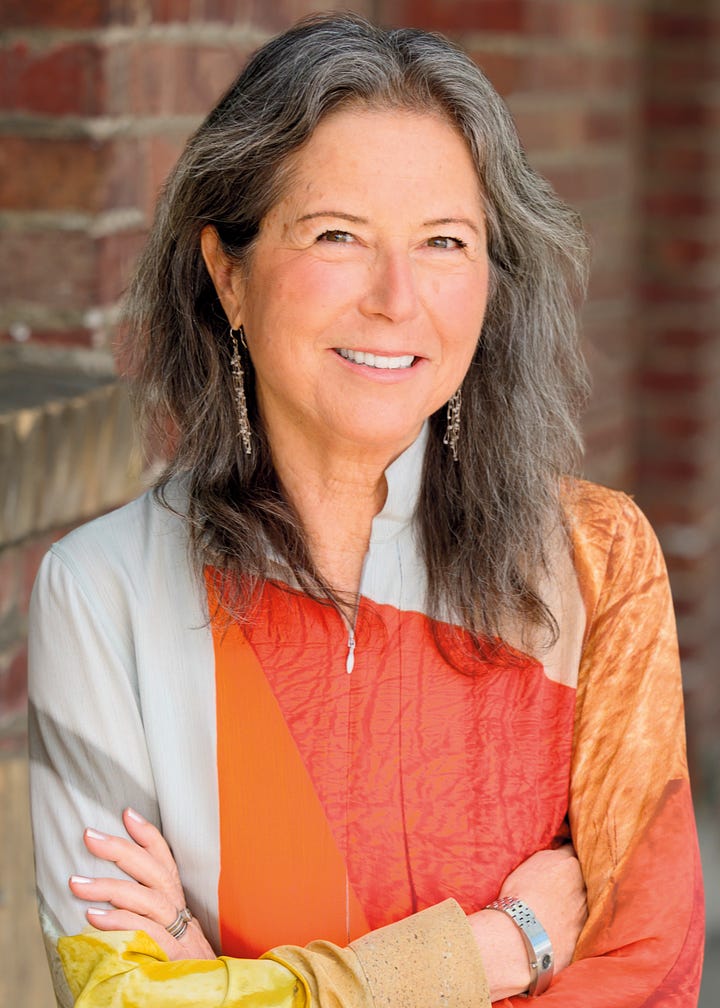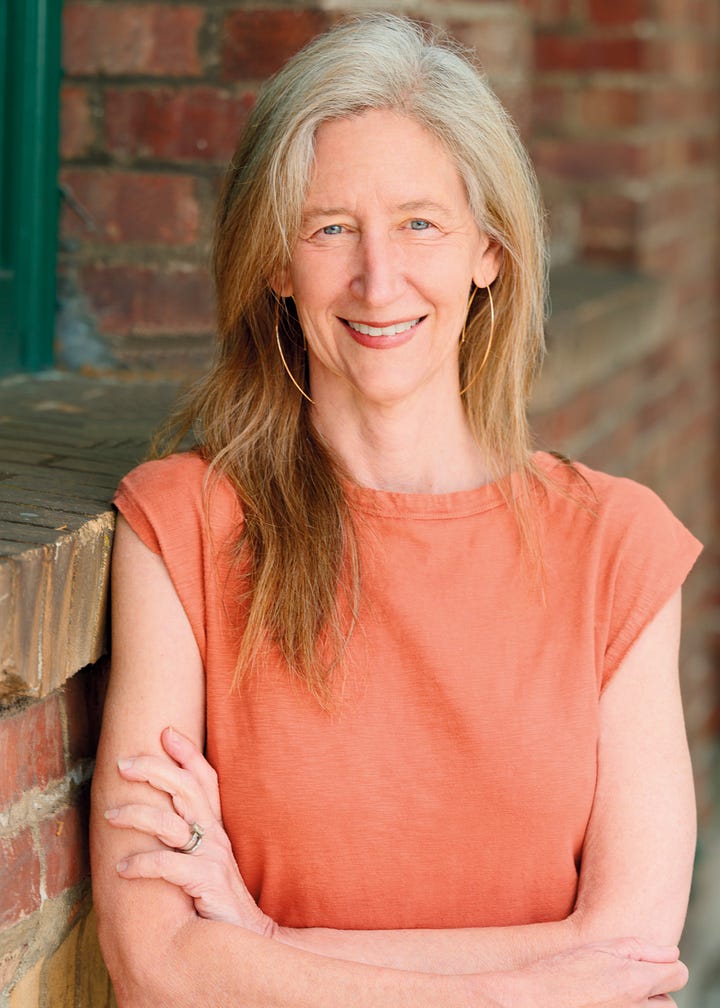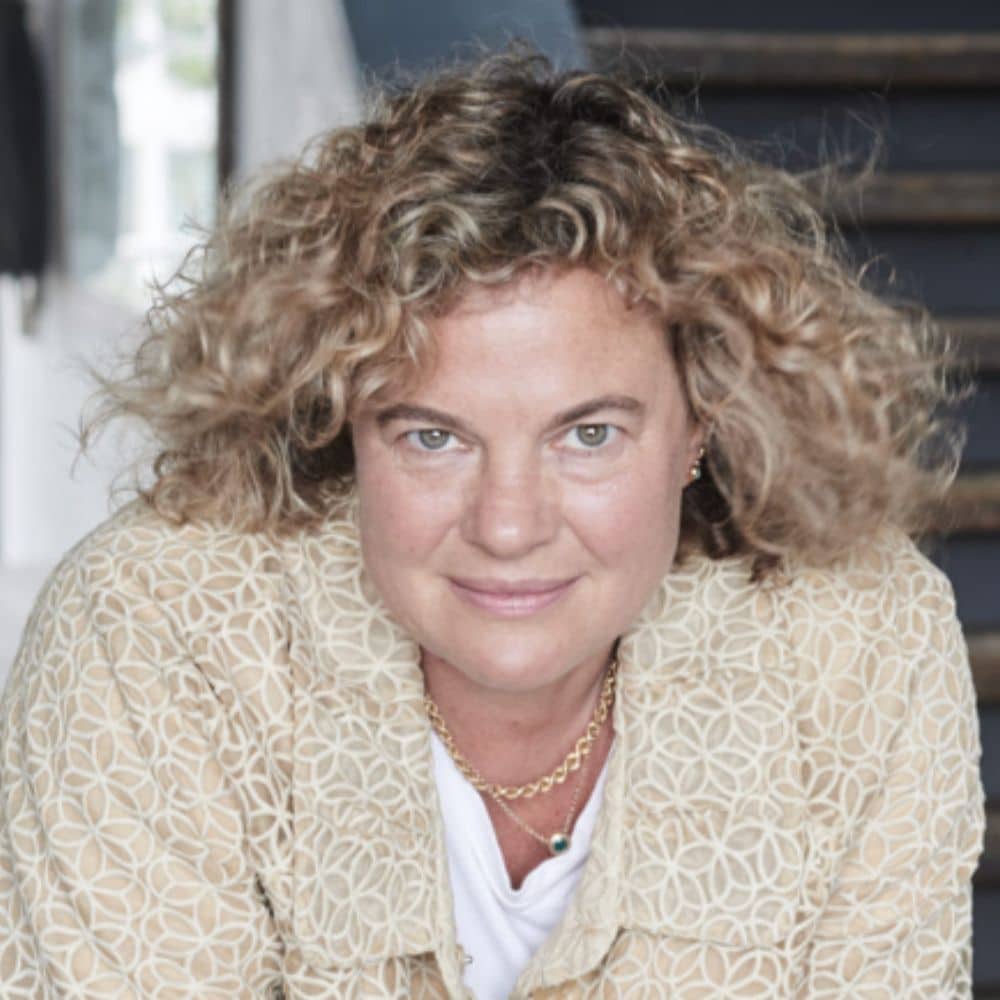The arty pursuits that can extend your lifespan by ten years
The Queenager: Eleanor's Letter (April 2nd 2023)
Two Queenager authors share the latest neuroscience from their new NY Times bestseller in an exclusive interview with Eleanor Mills

Dear Queenager
Forgive the tardiness – I went to Wallingford today to walk along the Thames (flooded so no swimming) and peruse its Motte and Bailey castle and medieval bridge. It was sunny so we lingered over lunch, watching red kites soar and dip in a distinctly predatory pterodactyl like way over the old walls and the swollen river. Sun occasionally glinting through the grey…. April is the cruellest month…
A little poetry is a fitting prelude to what follows.. I had fun doing the interview with Professor Susan Magsamen and Ivy Ross which forms the basis of my letter to you today. I talked to these two impressive Queenagers before the book came out, about a month ago, and can proudly inform you that in its first week their fascinating tome, Your Brain on Art, has become a New York Times Bestseller. I like the thrust of the latest neuroscience – that the DOING is the thing…
Anyway..
We all know that for our optimal physical health we should eat at least five different fruits and vegetables a day (in fact the latest research suggests consuming 30 different types a week). But did you know that just one art experience a month can extend your life by ten years? And a daily artistic practice of any kind (you don’t have to be any good, it’s the doing that matters) can have huge benefits in terms of lowering stress levels, helping with serious physical and mental health issues and help us learn and flourish?
A new book, written by one of America’s most eminent translational neuroaesthetic researchers in conjunction with the Google vice president of design for hardware products, has pulled together all the studies out there to “make a case for the efficacy and beneficial affects on humans of art.”
Professor Susan Magsamen, director of the International Arts + Minds Laboratory, Center for Applied Neuroaesthetics at John Hopkins University School of Medicine, says that processing art is not just good for us but inherently changes the way our bodies and brains work. “The evidence is here: Mask-making helps soldiers recover quicker from PTSD, a cancer hospital designed to increase and augment sensory experiences helps patients heal faster. There’s a virtual reality program that alleviates pain for burn victims when they are having their dressings changed, and we are redesigning schools, workplaces and public spaces as we understand how sensory-rich environments help us learn faster and retain more information.”
In the book Your Brain on Art (published by Canongate this week) Magsamen draws on cutting edge research to show that engaging in 45 minutes of any kind of art – from colouring to dancing or playing music – reduces cortisol (the stress chemical) and can help us live happier, healthier lives. Her co-author Ivy Ross is an artist whose work was being exhibited in galleries around the world by the time she was in her mid- twenties and is globally recognised as a force in creativity and innovation, not least at Google where she is Vice President of Design for hardware products leading a team which has won 225 design awards. Ross explains that she was keen to be involved in the book because: “What Susan’s laboratory is doing by investigating and translating evidence about the arts is demonstrating empirically what us artists have always known instinctively: art can transform us. Everyone uses the arts in their lives in some-way, to process experience, to cheer themselves up, to alter the way they see the world and understand it: in this book and this work we are trying to quantify what is happening when we do this. The field of the neuro-arts is about translating that innate knowledge of the power of the arts into scientifically rooted practice. To prove how the arts act in service to health, humanity and learning.”
Magsamen (right) chimes in (I am interviewing them both on Zoom from Ross’s home in California and they look uncannily similar, same long grey hair and glasses, similarly infectious warm and intelligent manner.) “The arts are medicine – they are the key to everything, a portal into other ways to see the world. We’ve all gotten lost in music, in a painting in a movie or a play and felt something shift within us. We’ve read a book so compelling we’ve pressed it into a hand of a friend, listened to a song so moving we listened to it over and over. The arts bring joy. Inspiration. Well-being. Understanding. Even sometimes salvation. They might not be easy to explain but we know they are real and true. But now we have scientific proof that art is essential to our very survival.”
So far, so inspirational – but what, I ask, is the evidence? What is happening in our brains when we listen to music, or paint, are moved by a painting or even doodle or colour something in?
Magsamen’s life’s work as a translational researcher is in neuroaesthetics or neuro-arts – in layman’s terms, the study of how art affects the brain. She tells the story of a man with alzheimers who after listening to a playlist of songs he used to love recognises his son for the first time in ten years. “The music triggers multiple brain pathways stimulating the auditory cortex (which processes sound) the amygdala (the seat of emotion) and the hippocampus (memory). When we listen to nostalgic music it activates the hippocampus, but importantly, also other areas of the brain which also link to memory and recall that have not been damaged, allowing recollections which have thus far been unreachable by the alzheimer’s patient to be rekindled. ”
The book looks at four core concepts of the neuroarts. The first is neuroplasticity – the brain’s capacity to form new neural pathways, essentially to rewire itself. Magsamen explains how when she met her husband, “I literally rewired his brain with our first kiss because those pathways became so heightened and important, we call it salient. From that moment on his brain worked in a new way. This happens to all of us when we have an emotionally important experience.”
The second aspect is how our brains are strengthened and grow more when surrounded by stimuli (of which the arts are a particularly valuable variety). The third principle is what the book calls the “aesthetic triad” – this is how our sensorimotor system when coupled with the brain reward system (where our feelings of pleasure come from) added to cognitive mean -making add up to an aesthetic experience. Each of us builds up a person concept of beauty built on our personal perceptions and important moments. Wordsworth, the romantic poet, wrote “There are in our existence spots of time which retain a vivifying virtue” – those moments where we are so moved by beauty, or emotion that they go on growing in meaning as time passes, they go on enriching and defining us. That is the aesthetic triad at work.
The final piece of the jigsaw is the default mode network, the neurological place where our concept of ‘self’ is created – this is where the brain decides whether a piece of art ‘matters’ or is ‘salient’ (moving or meaningful) to you. Magsamen’s laboratory has found that taking part in the arts releases chemicals – hormones and endorphins – which lead to emotional release, or catharsis, which then positively affects our behaviour and how we feel. In a nutshell the neuroscience shows that the arts change our biology, our very brain chemistry in a positive manner.
At this point Ivy Ross jumps in explaining how as a boss she “often calms down stressed co-workers using tuning forks in C and G. They create a specific sound which travels through the neural pathways and disrupts the stress cycles and elicits relaxation. Sounds hits the brain unconsciously but literally changes the vibration in the body.” It isn’t just Ross who uses this technique. The FDA in the US has approved VAT (vibroacoustic therapy) for pain relief. In Finland, a study looking at the effect of VAT on chronic pain found that sounds can reduce the stress associated with pain, making us more resilient.
“The more we understand about how the arts work physically and physiologically the more we can learn to use them effectively in our own lives,” says Magsamen. “The more salient – ie emotionally powerful – something is, the better we learn and remember it.”
So what should we all be doing to best harness these affects for ourselves? Ross and Magsamen recommend at least 30-45 minutes of some kind of artistic activity every day. “People who engage in the arts ideally every day, but at least every week, are found to have lower mental distress, better mental functioning and improved quality of life”. Cynics might add that those who are likely to paint or go to the theatre probably also have the money to eat better and are removed from the weathering stresses of those who live in social deprivation. But the correlations with engaging in art are statistically true; and the new science of what is going on in our brains when we are artistically involved are compelling. It can’t be doing us any harm – and unlike many things that are good for us are even pleasurable!
So what should we be doing?
- Listening to music: a personalised playlist of songs associated with happy memories release anxiety and boost mood (in California this is now called ‘personalised microdosing of aesthetics’ so next time you want to lie down and listen to your favourite Spotify playlist don’t just say you are relaxing!) “Sound vibration has the capacity to return the body to homeostasis and out of a fight-flight-freeze reaction” explains Magsamen. “It is an excellent tool for stress because it works on an unconscious level. The frequency of sound instantly taps into what lies underneath conscious recognition, literally changing the vibrations in your body.”
- Read poetry: Reading a poem that you love lights up some of the same parts of the brain as listening to music, stimulating the brain’s primary reward circuitry
- Get out the clay or play-do: Working with clay is the only art form where both of your hands have the same level of dexterity. Studies have shown the psychological benefits of being able to make something in clay, break it down and start again. The tactile quality of clay work reduces negative mood and anxiety and also helps you focus. Working with clay releases serotonin, effortlessly lifting your spirits and increasing and optimistic outlook
- Humming and singing: Both of these activate the vagus nerve, engaging the parasympathetic systems to make you feel calm and more optimistic. Singing has been proved to help dementia patients reconnect to family and friends because it activates different pathways to memories in the brain.
- Knitting with others: creating a knitting circle, sitting with others while you knit or sew, results in stronger social connections, helps maintain focus and reduce anxiety and helps to manage stress
- Work with your hands: whether it is kneading bread, knitting or crocheting with yarn, gardening and immersing your hands in the soil, using your hands to make or do something, stimulates skin and nerve endings and ignites the body’s internal sensory receptors making you feel instantly attentive and focused
- Do some colouring: remember that fad for adult colouring books? Turns out they were onto something. Half an hour of colouring stimulates the same deep parts of the brain as meditation and might be easier to focus on
- Play an instrument: playing music increases synapses and grey matter which supports broader cognitive skills
- Smell something you love: smell informas as much as 75% of your emotions. Lying in a hot bath scented with lavender or another smell you love, or which has good connotations for you, is massively effective for lifting or changing mood
- Immerse yourself in an interactive exhibit: these dissolve the boundaries between art and viewer, engaging all of our senses and creating strong emotional reactions that heighten learning and memory
Your Brain on Art by Susan Magsamen and Ivy Ross is published by Canongate.
Hope you enjoyed this – have a great week. Those of you who fancied the Wasing retreat last weekend pencil in your diaries July 8th… more news on that this week!
xxx
Eleanor
By Eleanor Mills


